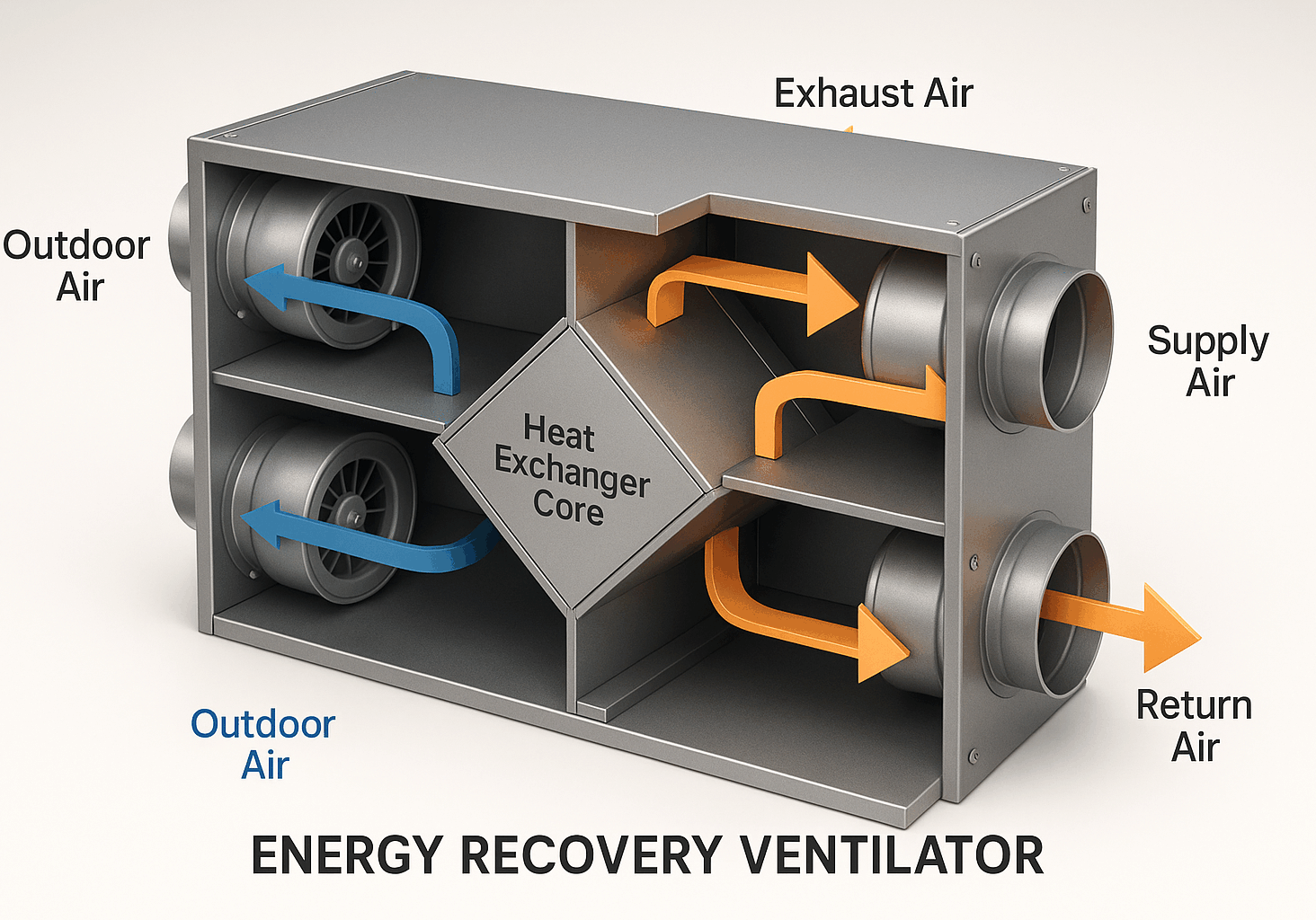Why Use an ERV in Central Indiana?
Here’s what makes ERVs especially valuable in our region:
ERVs exchange outgoing and incoming air, transferring heat and humidity. In summer, incoming air is somewhat dehumidified; in winter, cold air is pre-warmed. This Old House+1
Because some of the energy in outgoing air is recaptured, your heating and cooling systems don’t have to work as hard. Many units recover 60–80 % of energy in ideal conditions. This Old House+2linquip.com+2
Pollutants, VOCs, odors, moisture from cooking or showers — an ERV helps flush them while maintaining interior comfort. williamscomfortair.com+2This Old House+2
Some local or state building codes and energy programs (residential or multifamily) may either require or reward installations of energy recovery systems in tight homes. Home Ventilating Institute
Unlike HRVs (which only transfer sensible heat), ERVs manage moisture transfer — crucial in our summer humidity and winter dryness. legacy.lghvac.com+3Wikipedia+3linquip.com+3
How It Works
- Stale indoor air exhausts through ducting from bathrooms, kitchens, and other zones.
- Fresh outdoor air is drawn in through a separate duct.
- Heat + humidity exchange in the core: Before the fresh air enters the home, it passes next to the exhaust airstream. Heat and moisture transfer through a porous or enthalpy core — without mixing the two air streams directly. This Old House+2linquip.com+2
- Distribution & exhaust: Preconditioned fresh air is delivered to living zones; stale air is expelled outside.
- Controls & balancing: Dampers, sensors, and fan speeds ensure proper flows and balance.
Some units include defrost cycles to handle cold weather frost build-up. Bryant+1
Our ERV Installation & Service Process
We follow a methodical approach to deliver performance and reliability:
01
Home assessment & load analysis
We measure the home’s size, existing ventilation, HVAC capacity, humidity levels, and duct layout.
02
System Specification
Choose the right capacity, core type, controls, filters, and location (attic, mechanical room, etc.).
03
Duct design and integration
Proper layout (short runs, balanced flows) and insulation to minimize losses.
04
Installation & Balancing
Start-up with measurements, airflow tuning, and control calibration.
05
Commissioning & User training
Show the homeowner how to monitor and maintain the unit (filter changes, etc.).
06
Ongoing Maintenance & Inspections
Annual checks ensure continued efficiency, core cleaning, filter replacement, and performance verification.
Local Use Cases & Benefits
System Options & Components
Cost & ROI
ERV installation costs in the U.S. typically range from $2,700 to $3,500 (installed), depending on capacity, duct complexity, and integration with existing HVAC systems. Homewyse
While upfront cost is substantial, the energy and comfort returns — via reduced HVAC runtime, better humidity control, and improved air quality — often make the investment worthwhile over a multi-year horizon.

